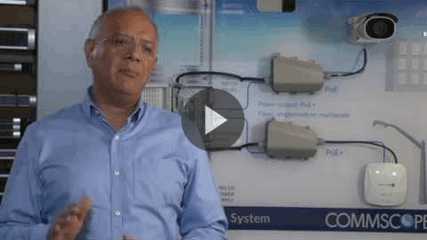 Editor’s Note: As we say good-bye to 2017, we look back at some of our most shared blogs of the year. We covered a wide range of network infrastructure topics, and we hope you enjoy revisiting some of these popular posts. This blog first appeared on August 23, 2017.
Editor’s Note: As we say good-bye to 2017, we look back at some of our most shared blogs of the year. We covered a wide range of network infrastructure topics, and we hope you enjoy revisiting some of these popular posts. This blog first appeared on August 23, 2017.
The need for connectivity and mobility have led to the development of innovative solutions. With the Internet of Things (IoT) penetrating every corner of daily life, operators still have many challenges ahead. Cellular, security and Wi-Fi networks are some examples of technology that need to be improved to expand their coverage and create efficient connections with Power Over Ethernet (PoE) devices. For this reason, simplifying the installation of these devices and optimizing their performance is one of the main challenges for network operators.
How many times have the deployment of high-definition cameras, Wi-Fi hotspots or small cells for cellular networks been a major problem for companies? With this in mind, CommScope designed the Powered Fiber Cable System, a solution that increases the range of coverage at lower costs and solve problems of access to power under difficult access conditions.
CLICK TO TWEET: CommScope's Domingo Hernández explains the benefits to deploying the Powered Fiber Cabling System.
Another problem that I have observed is the feeding of PoE devices at distances greater than 100 meters defined for a structured cabling network. To meet this challenge, CommScope engineers developed a system consisting of hybrid cables containing copper and fiber-optic wires that feed power and communications to PoE extender devices, thus extending the network coverage indoors or outdoors. And as the case may be... they managed to extend the 100 meters reach of a PoE channel up to a distance of 3 kilometers!
With the Powered Fiber Cable System built into an infrastructure, the economic and operational benefits are practical and immediate because it reduces installed PoE devices, since their location depends on their performance, not the availability of a power line. On the other hand, the safety and availability of connected equipment is greatly increased thanks to the management of centralized direct current 48 Volt power supplies, which can be connected to higher capacity backup devices that will maintain circuit operation for a period of time in the event of power failure.
The Powered Fiber Cable System is composed of two primordial elements:
- Multimode or single-mode hybrid fiber cable in counts of 2 to 12 fibers and copper or 12 AWG conductors.
- Power Over Ethernet Extender, which contains electronics that perform different functions: power management, media conversion, 3-level line protection and polarity corrector, all contained in an IP67-level environment-tight chassis.
Do you want to know more about the benefits of this solution? Write a comment and I'll be happy to answer any questions.
Watch my video (in Spanish)
Click here for our Powered Fiber Cabling System.







